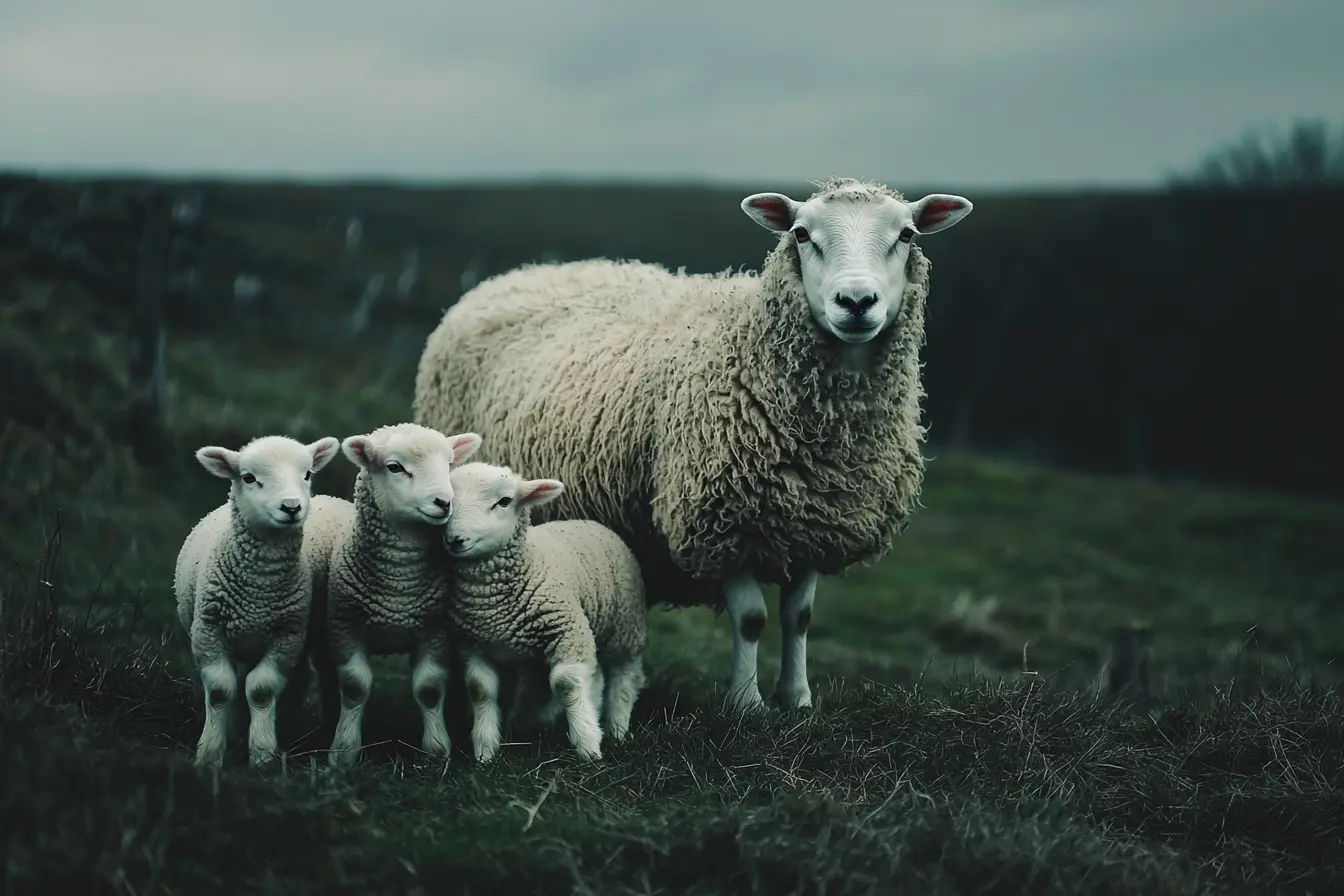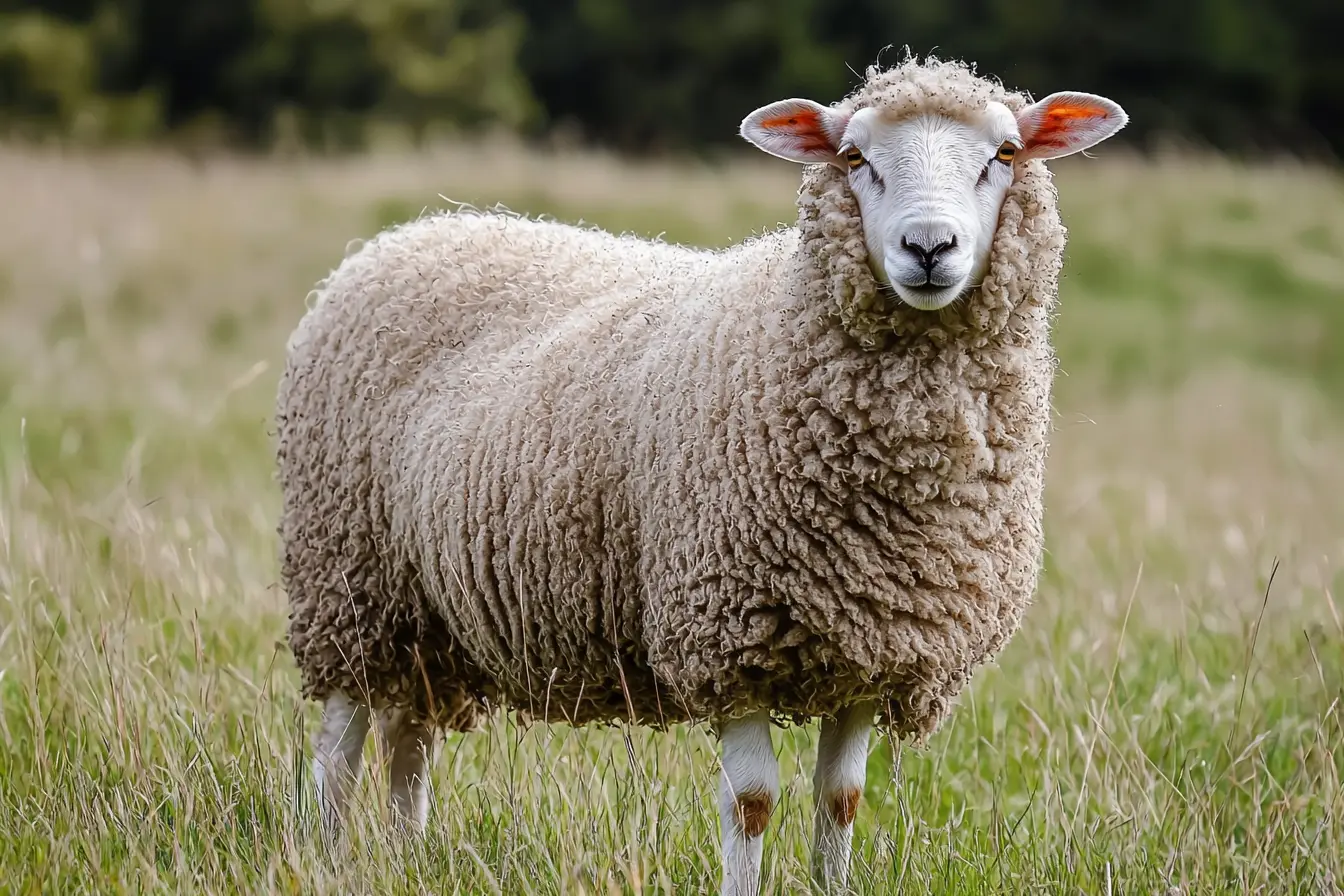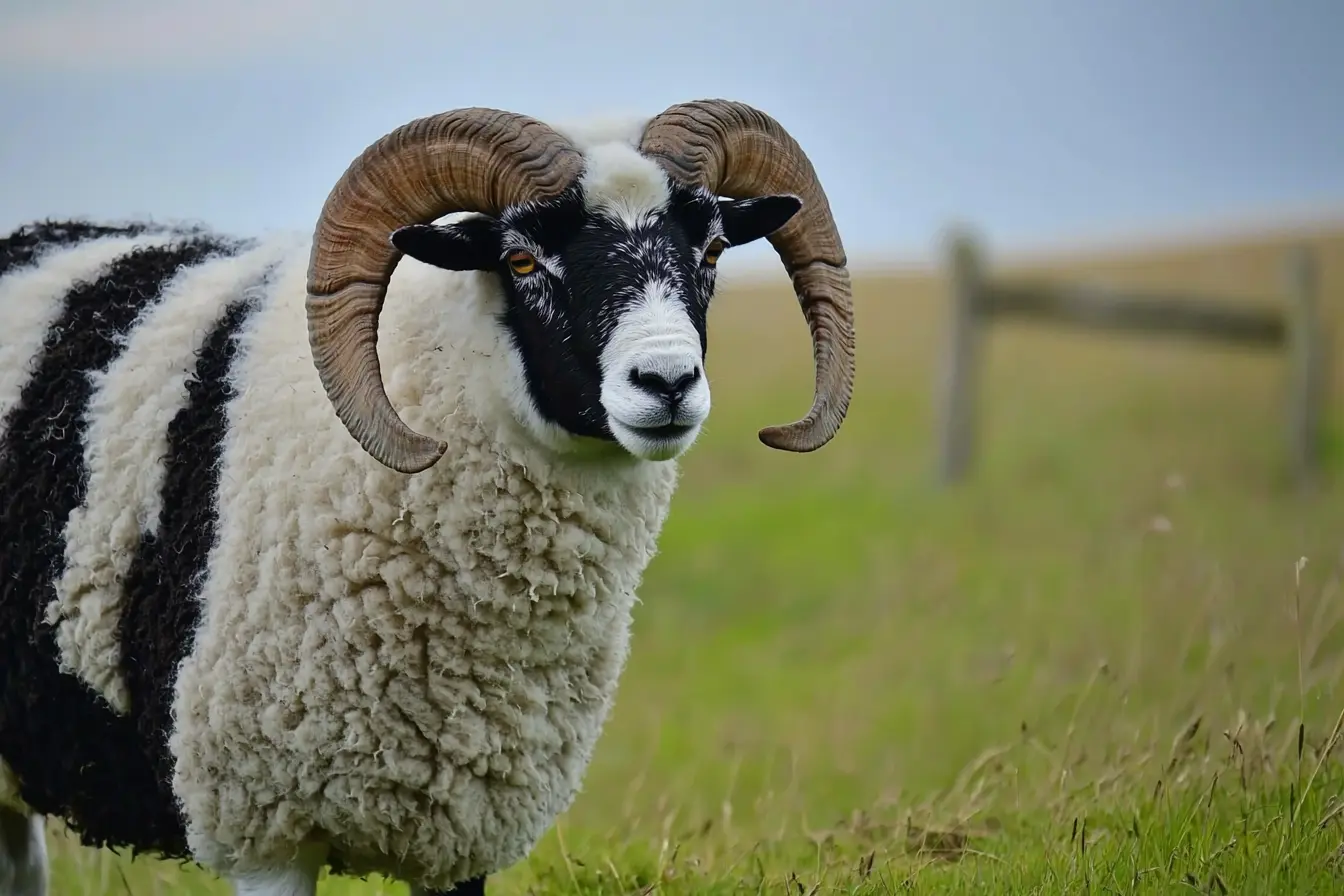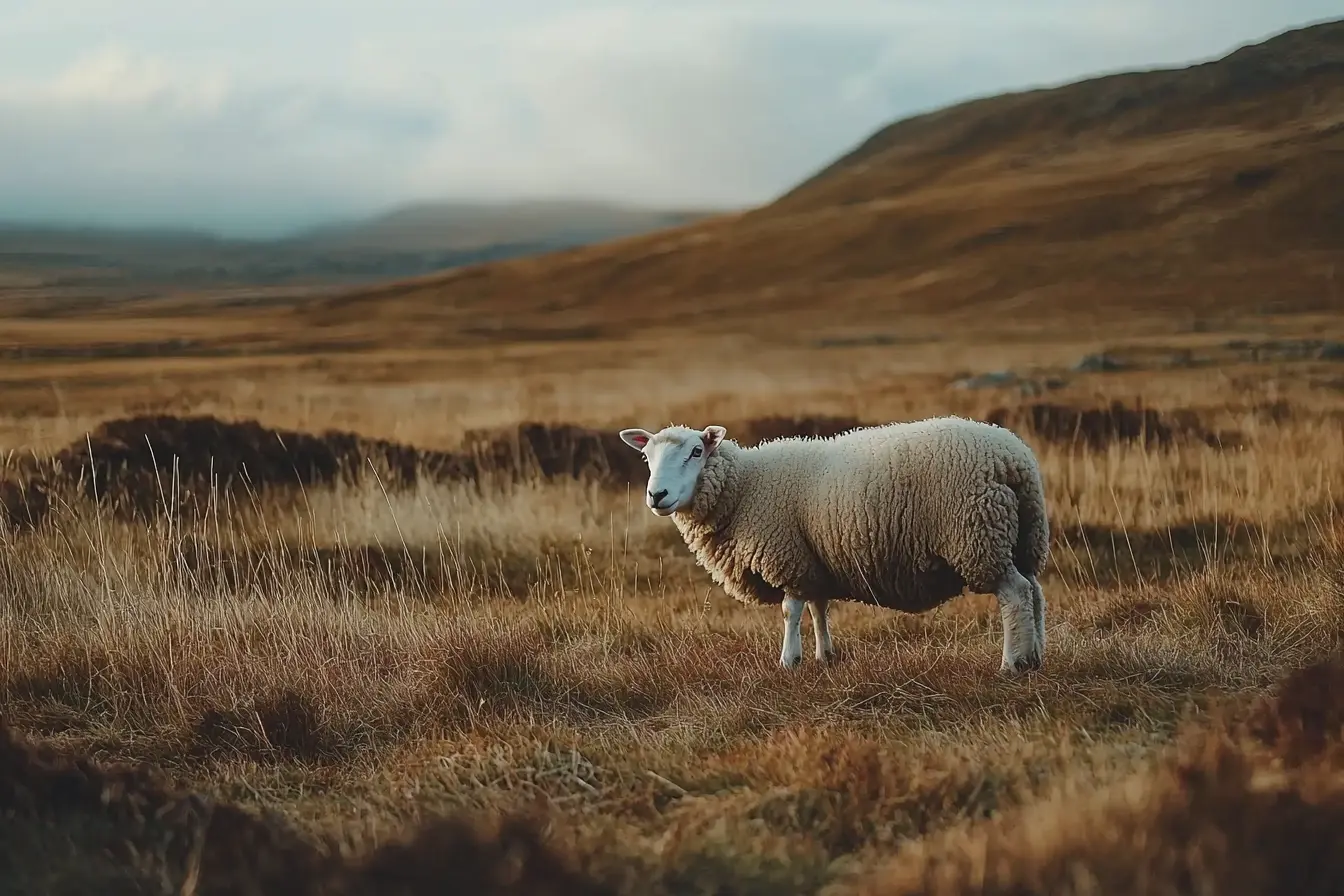
A Complete Guide to Breeding Sheep
Breeding sheep can be a rewarding experience, whether you're looking to increase your flock, improve genetics, or raise lambs for meat or wool. However, breeding requires careful planning and proper care to ensure healthy ewes, rams, and lambs. This guide covers everything new sheep owners need to know to breed their flock successfully and responsibly.
Understanding Sheep Breeding Basics
Before you start breeding sheep, it’s essential to understand their reproductive cycles and the best practices for ensuring a healthy breeding season.
Breeding Age
- Ewes (female sheep) can be bred once they reach sexual maturity, typically around 7-9 months old, but it's best to wait until they are at least 12 months to ensure they are physically mature enough to carry lambs.
- Rams (male sheep) reach sexual maturity at around 5-6 months, but it's ideal to wait until they are at least 7 months for better results.
Oestrus Cycle
Ewes are seasonal breeders, meaning they come into heat during specific times of the year. In the UK, sheep typically breed in the autumn months, ensuring lambs are born in the spring when conditions are ideal.
- The oestrus cycle lasts around 16-17 days.
- Ewes are in heat for 24-36 hours during each cycle.
- Most breeds have a natural breeding season between September and December.
Selecting Your Breeding Pair
Choosing the right ewes and rams is crucial for improving the genetics and productivity of your flock.
Selecting a Ram
When selecting a ram, consider the following factors:
- Health: Choose a ram that is in excellent health with no signs of illness or injury.
- Genetics: Look for rams with desirable traits such as strong legs, good body conformation, and a history of producing healthy lambs.
- Breed Purpose: Depending on your goal (meat, wool, or dual-purpose), select a breed that aligns with your objectives.
Selecting Ewes
Ewes should also be carefully selected to ensure successful breeding:
- Age: Ewes between 1-6 years are typically the most productive for breeding.
- Health: Avoid breeding ewes with any signs of disease or poor body condition.
- Fertility History: If possible, choose ewes with a history of successful pregnancies.
Preparing for the Breeding Season
To ensure a successful breeding season, both ewes and rams must be in optimal condition.
Flushing Ewes
Flushing involves increasing a ewe’s nutrition before breeding to improve fertility rates.
- Start 2-4 weeks before introducing the ram.
- Provide high-quality forage and concentrates to boost body condition.
Health Checks
Ensure both rams and ewes are in good health before breeding:
- Check for parasites and treat if necessary.
- Ensure all vaccinations are up to date.
- Trim hooves to prevent footrot and other hoof-related issues.
The Mating Process
When the ewes are ready for breeding, introduce the ram to the flock. This period is known as tupping.
Ram Management
- Use a marking harness on the ram to track which ewes have been serviced. The harness leaves a coloured mark on the ewe’s back when she is mounted.
- Rotate the ram’s colour every 17 days to monitor which ewes are returning to heat, indicating they did not conceive during the first cycle.
Ram-to-Ewe Ratio
- For experienced rams, the recommended ratio is 1 ram per 40-50 ewes.
- For younger rams, reduce the ratio to 1 ram per 25 ewes.
Pregnancy and Lambing Preparation
Once the ewes are pregnant, you’ll need to adjust their care to ensure healthy lambs and smooth lambing.
Gestation Period
The average gestation period for sheep is 147 days, or around 5 months.
Nutrition
Proper nutrition is critical during pregnancy:
- In the first 3 months, continue feeding the ewes their normal diet.
- In the final 6-8 weeks, increase their feed intake to support lamb growth.
- Provide good-quality hay, silage, and concentrates.
Housing
As lambing approaches, ensure the ewes have a clean, dry, and sheltered area to give birth. Lambing pens or lambing sheds are ideal for managing lambing and reducing stress.
Signs of Lambing
Ewes will display signs of impending lambing as the birth approaches.
- Udder development: The ewe’s udder will fill with milk.
- Restlessness: She may separate from the flock and paw at the ground.
- Nesting behaviour: The ewe may rearrange bedding or lie down frequently.
The Lambing Process
The lambing process typically consists of three stages:
-
Stage 1: Early Labour
- The ewe will become restless, lie down, and stand up repeatedly.
- This stage can last up to 12 hours.
-
Stage 2: Delivery
- The ewe will lie down and begin delivering the lambs.
- On average, 2-3 lambs are born, although some breeds may have more.
-
Stage 3: Afterbirth
- The ewe will expel the placenta within a few hours of lambing.
Caring for Newborn Lambs
Immediate Care
- Dry the lambs with a clean towel to prevent hypothermia.
- Ensure the lambs nurse within the first hour to receive colostrum, which is essential for their immune system.
Naval Care
Dip the naval cord in iodine to prevent infection.
Lambing Complications
Be prepared to assist if necessary. Common complications include:
- Malpresentation: The lamb may be in the wrong position.
- Prolapsed uterus: The ewe’s uterus may prolapse during or after delivery.
If you encounter issues, contact a veterinarian immediately.
Weaning Lambs
Lambs can be weaned at around 12-16 weeks of age.
- Gradually introduce them to solid feed.
- Ensure they have access to clean water and quality forage.
Common Health Issues in Sheep Breeding
- Pregnancy Toxaemia (Twin Lamb Disease): Caused by poor nutrition in late pregnancy.
- Milk Fever: A calcium deficiency common in ewes before lambing.
- Mastitis: Infection of the ewe’s udder, which can affect milk production.
- Scours: Diarrhoea in lambs, which can be fatal if not treated promptly.
Final Tips for New Sheep Breeders
- Keep detailed records: Track breeding dates, tupping periods, and lambing outcomes.
- Provide proper nutrition: Healthy ewes and rams are key to successful breeding.
- Seek veterinary advice: Don’t hesitate to consult a vet if you encounter any health issues.
- Be patient and prepared: Breeding sheep can be unpredictable, so always have a plan in place for unexpected challenges.
By following these guidelines, sheep owners can breed healthy, productive flocks with confidence.
Contents
- Understanding Sheep Breeding Basics
- Selecting Your Breeding Pair
- Preparing for the Breeding Season
- The Mating Process
- Pregnancy and Lambing Preparation
- Signs of Lambing
- The Lambing Process
- Caring for Newborn Lambs
- Weaning Lambs
- Common Health Issues in Sheep Breeding
- Final Tips for New Sheep Breeders
Tags
Vets near you
Speciality vets
- Aquatics vet specialists
- Birds vet specialists
- Camelids vet specialists
- Cats vet specialists
- Cattle vet specialists
- Deer vet specialists
- Dogs vet specialists
- Equines vet specialists
- Exotic vet specialists
- Goats vet specialists
- Pigs vet specialists
- Poultry vet specialists
- Sheep vet specialists
- Small Mammals vet specialists
- Wild vet specialists



